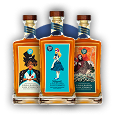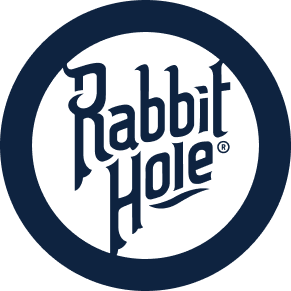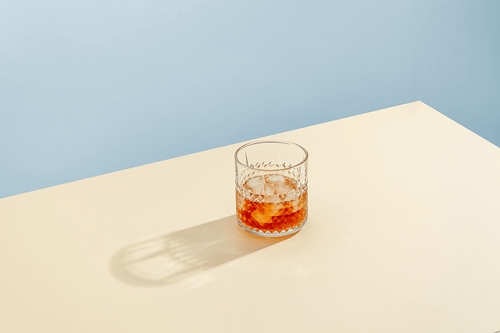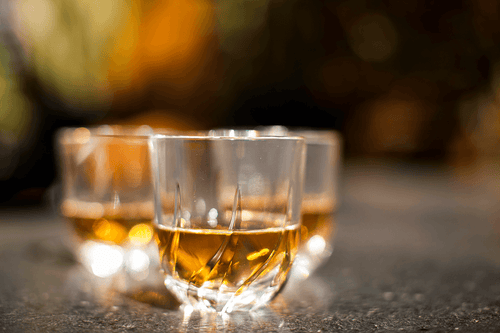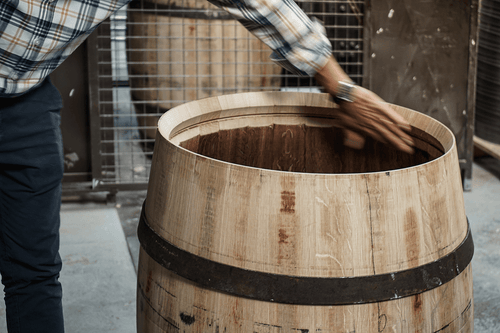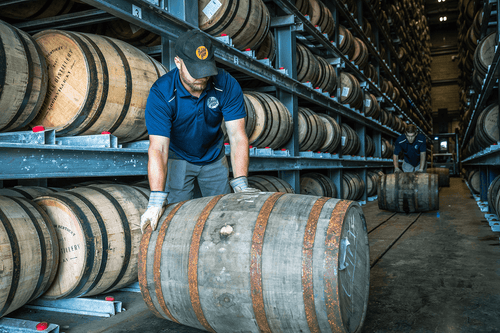Toasted And Charred
TOASTED AND CHARRED
As with nearly every aspect of the bourbon-making process, there are different processes to charring a barrel that can make a difference in the finished product. A toasted and charred barrel is one of those unique and artful twists which really allow some distillers to stand out with exceptional expressions...

Methods recently developed include using a less intense heating process for toasted and charred barrels. This process produces a significant difference in the flavor profile. Since the char level has a significant impact, it pays to understand the process and how the various aspects impact the flavor.
What Are Charred Bourbon Barrels?
A charred bourbon barrel is an oak barrel with the interior exposed to open flames that will burn at about 500 to 600 degrees Fahrenheit. The time it is charred depends on which level of char you want to achieve. The thickness of the char layer is usually one-eighth to one-quarter of an inch thick. Once the desired time has been reached, the flames are snuffed out, and the barrel is soaked in water to stop the charring process promptly.
Why Char Bourbon Barrels?
The original purpose of charring, or having toasted and charred whiskey barrels was to cleanse them and remove the aromas and flavors lingering from whatever the barrel held previously. Since barrels were such a valued commodity, they were used for as long as possible until they were no longer sturdy. A whiskey barrel may have stored molasses, beer, or even meat before being used to age whiskey. As imparting those flavors into your whiskey may not be optimal, the barrels were charred to sanitize them.
While this straightforward reason was the start for charring barrels, it was found that a myriad of other benefits were also discovered. You probably think that the charring imparts a smoky flavor, but that isn't the whole of it. When the barrel is charred, it breaks apart the wood fibers and releases trapped compounds sealed in the wood. The composition of the wood is changed and reacts differently with the whiskey.
Charring also breaks these compounds down into smaller molecules capable of dissolving into the whiskey, delivering several desirable and delicious benefits. You probably heard that carbon acts as a great filter; charring a barrel coats it in carbon, helping to filter the whiskey. Of course, the level and type of charring also make a difference with the taste.
How Does Charring Affect Taste?
When you heat the wood, the cellulose and hemicellulose inside the barrel begin to break down into sugar. You'll find decadent flavors like caramel, toffee, brown sugar, maple, and nuts in these sugars. The lignin fibers within the oak also diverge, offering more distinctive flavor expressions. In addition, oak can contain vanillin, which imparts the taste of vanilla, or eugenol, which imparts a clove flavor. The heavier the char, the more intense the flavors imparted by the lignin become.
Meanwhile, oak lactones impart a light hint of coconut. When the barrel is lightly charred, this flavor is more pronounced, as deeper charring will damage the lactones and remove their impact on the taste. Tannins within the wood also get released during charring. Once it has been charred, it is thoroughly dried, removing the harshest tannins that would not be desirable.
The remaining tannins are more desirable and will gently interact with the spirit throughout the aging process. In addition, there are multiple oak varieties, each with different overall makeup. The growing environment also affects the wood's makeup with varying lipid, lignin, hemicellulose, and cellulose.
Char Levels
Char is broken down into four basic levels that most distillers will ascribe to:
- Level 1: The lightest charring level consists of a 15-second char and will impart slight campfire notes and make the bourbon sweeter.
- Level 2: Next up is a 30-second char that will release coffee and vanilla notes, along with a hint of spice.
- Level 3: Only slightly longer at 35 seconds, this level adds some caramelization along with spice and vanilla.
- Level 4: The most intense char clocks in at 55 seconds and imparts the most profound flavor, along with some sweet notes.
Level 1 is usually the char of choice for homebrewers, while most distilleries will opt for a level 3 char. For those who prefer level 4, this level of charring will also form a texture that filters the bourbon through the deep crevices.
Toasted and Charred - Bourbon Barrels
What is the difference between charred and toasted and charred barrels? Toasted and charred barrels are exposed to a lower temperature for a longer time, allowing the heat to penetrate deeper into the wood before there is considerable “burn.” Toasted and charred barrels offer similar flavor advantages to charred barrels, although they mainly impart vanilla and spice. Toasting and charring give better control of the vanilla flavor and the final color. Toasting and charring versus, or in addition to, only charring introduces another layer of complexity that provides distillers with more opportunity to develop something truly unique.
Toasted and Charred Bourbon Barrel
It's important to note that these are not either-or processes — both can be done on the same barrel. Many distillers will indeed use both methods. When a barrel is toasted and charred, it is done first to get that deep penetration into the wood, releasing more subtle flavors than charring alone. Once the desired barrel toasting level is reached, the barrel is charred to the desired level. Combining these two processes can create a very complex bourbon expression with rich and decadent aromatic and flavor notes.
You may come across a few rare bottles in your local big box retailer that states “toasted and charred” on the bottle. You can be sure this expression will be quite unique and one-of-a-kind in terms of depth and complexity. Toasted and charred is yet one more component that passionate and artful bourbon distillers are experimenting with in order to stand out in an over-saturated market.
Once you have developed an affinity for certain chars and toasting processes or gain this knowledge, you'll want to know what methods were used for charring and toasting. Some bourbons will list it right on the bottle. For those that don't, you may have to do a little digging to find out.
Experiment with many bourbons of varying toasting and charring techniques and find what you prefer. A plethora of choices are available, and with some thoughtful tastings, you'll begin to pick out the subtleties between the bourbons and dial in your taste profile, becoming a bourbon connoisseur. If you are interested in trying a one-of-a-kind bourbon which was aged in a toasted and charred barrel, take a look at the award-winning bourbons and rye whiskey form Rabbit Hole Distillery. All bourbon expressions are always “toasted and charred.”














